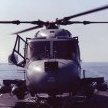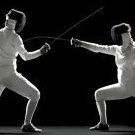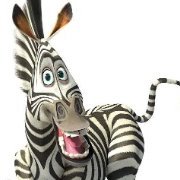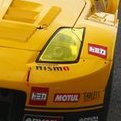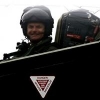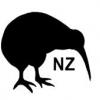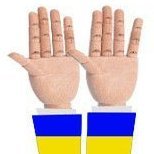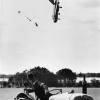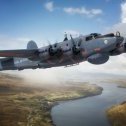Leaderboard
Popular Content
Showing content with the highest reputation on 09/08/22 in all areas
-
Hi all. Here is my latest finished model; the impressive 1/48 B-26K (A-26A) Counter Invader from ICM. This is probably the most anticipated version of the A-26 invader family After the only options were the Monogram kit with resin conversion parts or the Must Have kit, which didn't look that impressive when I opened the box. In my opinion, ICM did a great job although there are a few areas that need some impoving. Luckily, Vector produces a corrected gun nose and a set of propellers, which I both ordered from NeOmega in the UK. The kit builds quite nice and there are no major issues with the fit of the parts. The soft plastic however makes assembly a bit fiddly from time to time. Apart from the nose and props, I also used a pre coloured pe set from Eduard to spice up the interior and resin reduction cases from Quickboost. The (incorrect) wheels are from Eduard and I liked them better than the kit wheels although the rims are the wrong type. The model was painted with MrHobby acrylics over a black primer base from Alclad. Weathering was done with Abteilung 502 oilpaints. Thanks fro watching, René35 points
-
Another day, another treasure from the archives... Another little gem from Airfix, that required very little in the way of hard work..... A very straightforward build that is a reasonable representation of the real airframe. Playing with the shutter speed, and a little post-processing to attempt to capture a 1950's vibe with faded colours.... Engine test - I think it turned out ok... ish25 points
-
As you all probably know this is the Airfix Nimrod. I recently managed to finish it ready for the Avon model show, it's been built almost straight from the box other than the Ali cat canopy and model Alliance decals. Hope you like it. Regards Glenn,24 points
-
My latest completion not to the stunning standard of some on here is the Hasegawa F-4B/N Phantom II finished as an F-4B of VMFA 531 during cross decking operations on HMS Ark Royal using the Cut then Add decals, Eduard brass used in the cockpit and finished using MRP and Tamiya Lacquers, weapons came from the spares box and the Hasegawa Aircraft Weapons set III. 1/72 McDonnel Douglas F-4B Phantom II by Phillip Wilmshurst, on Flickr 1/72 McDonnel Douglas F-4B Phantom II by Phillip Wilmshurst, on Flickr 1/72 McDonnel Douglas F-4B Phantom II by Phillip Wilmshurst, on Flickr 1/72 McDonnel Douglas F-4B Phantom II by Phillip Wilmshurst, on Flickr 1/72 McDonnel Douglas F-4B Phantom II by Phillip Wilmshurst, on Flickr Anyway enjoy.24 points
-
As I mentioned in my recent post featuring the Airfix 1:48 Seafire F.Mk.XVII, my finaceé loves Seafires and B-17's So, as well as the Seafire (link here) I built her a B-17G to go with for her collection.23 points
-
My all time favourite aircraft are the Supermarine Spitfire in all it's guises, and the North American P-51 My darling finaceé (soon to be wife) has a thing for the Seafire... and B-17's... so I built her a Seafire... (what else is a guy to do?) I decided to complicate an otherwise straight-forward build by having the model displayed with asymmetric wing folding... just because I wanted to see if I could pull it off... With no further waffle - I present the completed project22 points
-
Well, she is done. my first finished jet airliner model. First, the executive summary. Subject: Vickers-Armstrongs Super VC-10, type 1151. Manufacturer: Roden, Kit No. 313. Scale: 1/144th (Twice as good as 1/72nd scale!) Paints Used: A combination of Tamiya Acrylic, Lacquer, and GSI Creos Mr Color and Mr Super Clear gloss lacquer finishes. Decals: Sourced from 26Decals sheet, No. STS 44276. Additional parts used: FOD covers, landing gear doors, blade antennae and water drains from NH Detail, A144-023. Montex Windscreen/window/wheel hub masks, SM 14416. Anti-Collision beacons from ELF. It's my first Roden kit, and i probably could have picked an easier one. However, it's now finished and in the books. Despite all the work, i'm pleased with the end result. For those of you who want the whole guts of the online build, you can find it here: The best way to describe this project is to say it was a learning experience, both in practical problem solving as well as program management. It was a testbed for many techniques i'd acquired over the years, incorporated into one single build. The first thing you need to know going into this project is, you will have to block-sand and fettle with the fit of just about every part, before you glue anything together. Many of the sprue lands are on the mating surfaces. The plastic is thin and brittle out near the delicately shaped stabilizer and wingtips, and you'd better be prepared to do some damage control on these, as they're not very well protected in the box. There is some flash, and out near the wingtip trailing edges its sometimes hard to tell where the part ends and the flash begins. Just about every locator pin hurts, more than helps. On surfaces like the vertical fin and wing trailing edges, there are gaps that need to be filled with C/A or .005 plastic sheet because they cannot be sanded to a perfectly flat knife edge. The cabin windows are represented by plastic strips with embossed windows which are installed from the inside. When installed, they do not all uniformly sit flush with the surrounding outer skin. This led me to my first learning experience: Tamiya White Putty doesn't work for cabin windows. The Tamiya putty was a bit fussy to spread over the cabin windows, and while i was prepared for the inevitable shrinkage and air bubbles, i was not prepared for it lifting out of the windows when masked over. On several occasions, right up to decaling and touchup repair, some Tamiya putty pulled out of the window depressions, which required tedious and messy localized re-filling and paint repair. On VC10 No. 2, i've gone with a hybrid of epoxy and CA (not by choice) and at least so far the results have been better. The fit of the main assemblies to each other is for the most part, vague. Which leads us to the second lesson from this build: Assembly "A" + Assembly "B" + 90-degree Joints = Filler. The two worst offenders here are the joint at the base of the vertical fin, and the engine pylons to the side of the fuselage. You can see all of the gory details over at my Work In Progress thread, but the bottom line is the butt ends needed to be built up with CA and re-profiled to attain a sharp 90-degree joint where there were considerable gaps. The wings incorporate a 1960s-vintage tongue and slot assembly which results in a mediocre fit at best. I sawed off the locator tongues, block sanded the butt ends of the wings flat, and fashioned new spars from plastic and aluminium tubing. It took a bit of work, but the fit was much better. With all of the major sub assemblies cleaned up, primed, and cleaned up again it came time to start bringing them all together. Which brings us to the next takeaway item from this build: Alignment is a @#$%^. The VC10 is not what i would consider a "complex" geometric shape, but the combination of the high T-Tail with the acute sweepback, along with the gracefully curved Kuechemann wingtips made getting the alignment nailed, difficult. Some of it is attributable to parallax, but some is also attributable to the slots in the sides of the vertical fin being maybe not perfectly symmetrical, leading to some minor variances in incidence. You could look at the tail from some angles and it would look fine...and from other angles, clearly something was amiss. i did my level best (pun intended) to make sure the vertical fin was glued on perfectly vertical and square to the lateral axis of the fuselage. On some days i think it looks okay, on others i feel like i was being a bit sloppy. Fences are not something to be afraid of, and brass is your friend. Sometimes. The NH detail set includes a lot of little extra details for the Roden kit, but i ultimately used only a fraction of them. One of the main items i used were the large fences that run over the wing, just inboard of the slats. Even though NH included locating pins to fit the corresponding holes for the kit plastic parts, the fit was...tenuous. I used Krystal Kleer and MiG Ammo acrylic glue, along with Mr Surfacer 500 to join and fill the 90 degree joint. Throughout the final assembly process, the fences got in the way. I was constantly putting my fat fingers on them, or next to them, causing me to bend them and crack all the filler work loose. The best way to install things like these would be at the end of the painting and weathering cycle.... ....which is exactly what i did for the smaller, leading edge fences that Roden and NH forgot about. Cutting a slot in the wing leading edge and fabricating small fences from brass sheet worked perfectly for installation at the end of the build cycle. Looking at the photos, i think they came out looking pretty good. (that should read: May 18, 2022). On VC10 Numero Dos, i've repeated the process of cutting slots in the wing leading edge, but i made the saw cuts before the upper and lower halves were glued together. I also made a very long/deep cut into the inboard upper wing plank to take a new scratchbuilt wing fence. We will see how that goes. Now, once appropriately sized pilot holes are drilled in the right locations, installing the blade antenna and drain masts was very easy. You just have to time things right so that they don't get in the way of installing other things. In my case, these go on very late in what i call the "End Game". The model was assembled mostly with Tamiya extra thin liquid cement, and i had few if any problems with joints cracking open. However, one issue that kept coming back were "ghost seams" that kept reappearing on the upper and lower fuselage joints. I inspected these areas carefully after sanding, and after priming. Once the gloss white went on the top and the gloss grey went on the bottom, the seams started to re appear. I went back over several areas to fix them. In some cases the fixes were permanent, and in others the seams came back again. In most cases, you really need to look for them, but sometimes when light shines laterally across the top of the fuselage, they jump out at you, bright as day. I don't have an explanation or excuse for this. I don't know if its operator error, or if there is just some sort of chemical incompatibility problem between the Roden styrene and the solvents in the Tamiya and Mr Color paints. The model was initially primed with my experimental mix of Mr Base White 1000 tinted with Mr Color H27 and Green. The white solar cap coverage was started off with Mr Base White 1000, and over that i applied Mr Color H1 Gloss White. When dry i sanded it down with 4000 grit micro mesh. I then sprayed the model with Mr Color Light Gull Grey and when that was dry the "ridge" where the masking tape was removed by sanding with wet 6000 micro mesh. The characteristic, dark blue "Speedbird" cheatline was masked and painted by hand. I used a mix of Tamiya Royal Blue and White for the cheatline. The Tamiya acrylics responded very well to "Carpet Bombing" with Mr Leveling Thinner and gave me a very high gloss. However, the paint was not as dry as i thought it was when i masked over the nacelles, which led to the next painful lesson: Tamiya Tape does weird things to Tamiya Acrylics and Lacquers, if they're not *really* dry. Strangely enough, i did not have similar problems with Mr Color, but when i removed the Tamiya tape from the engine nacelles, the gloss had been completely ruined, and what remained was a dull, flattish appearance which was not sticky, but somewhat rough. I had to wet sand, re mask and re paint. I'm not sure if this is a result of the solvents in the paint outgassing through the Tamiya tape, or something else. The takeaway here is to give those colours 18-24 hours to fully outgas and harden up before masking over them. This happened both with masking over the Tamiya Acrylic Royal Blue, and the Tamiya Gloss White Lacquer. Decals: Since i painted the majority of the markings, i relied on the 26Decals sheet for smaller details like the Golden Speedbird and the BOAC CUNARD logos. The 26 Decals sheet do not give you enough of the gold "Royal Mail" crests that go on the doors, so its a good thing that i bought 2 sheets. Mine has two; i think you actually need four. The decals themselves performed pretty well, but the ones provided for the cockpit windows and cabin/cargo door outlines were too big for the kit, which leads me to conclude that the sheet was really designed for the Welsh Models vacform kit, and not the Roden injection molded one. When i get round to decaling the second VC10 i will forgo using the outlines for the cargo doors at a minimum, though i will probably have to use the distinctive, split blue/white outlines for the cabin doors. After reading all the feedback from other modellers who built the kit, i decided to use the Authentic Airliners BAC 1-11 decals for the cabin windows. This tuned out to be a double edged sword. On one hand, they were the perfect size and shape for VC 10 windows and they were beautifully printed and applied just fine. The down side is, the spacing between windows on a BAC 1-11 and a VC10 are not the same. I was only able to use sets of 4 windows at a time before the slight difference in window spacing had a cumulative effect and started to throw everything off. Because the decal film was relatively thick, the edges of the decal film show up in some photos when the light his them just right (FWIW, i emailed AA, asking them to consider doing a set of cabin windows specifically for the VC10 along with some 3D printed vortex generators and windshield wipers). The final phases of painting and weathering were more or less trouble free, aside from the fact that gloss finishes require careful handling and lacquer paints are delicate and prone to chipping until covered with enough of a protective clear coat. The GSI Creos Super Clears are the best in the business for this sort of thing. Fast drying, sandable, and respond well to "Carpet Bombing". Undercarriage: This was easily the most stressful and aggravating part of the build. Why was this?? For starters, the left and right halves of the strut came together unevenly when the injection mold halves came together. This led to a stagger/offset of both all the struts, but worse, the axle locations. The axle stubs had to be cut away and almost completely rebuilt from scratch. i had to make a best guess and choose the side that was "least terrible" and carefully drill through the struts to crate new pilot holes for the axles. There is not much "meat" in this area, so to beef things up, i punched small discs from .010 styrene to create more "Flat Plate" area that would make mounting the wheels easier. Brass rod and aluminium tube was used to make axles and bushings to take the wheels. Oh by the way, the wheels aren't really round. More aggravation ensues... The good news is the struts installed more or less trouble-free. I ditched the kit provided side braces and door connection rods and replaced these with Evergreen rod. The nose gear joint is extremely weak. I got around the problem by boring out the mounting hole in the lower fuselage to take another piece of Aluminium tubing. i then lopped off the mounting pin from the top of the nose gear strut, and bored a hole down the core of the strut into which i inserted a telescoping piece of brass rod. This arrangement provided more than enough mechanical strength for the nose gear. The final undercarriage installation is fairly robust, though there was a lot of angst and head scratching in order to get there. I added the NH FOD covers, not so much because the inlets turned out badly, but because there is nothing inside the tailpipes; just 4 gaping, Conway-sized holes. Plus, i thought they would add a nice splash of colour. So, i blocked off both ends to be consistent. This has been a much longer RFI report than i usually do, but nobody up to this point has done an exhaustive "Deep Dive" narrative on building this kit...and to a lesser extent not much like this has been written about 1/144th scale airliner building in general. I know it might sound like i'm being rather hard on the folks at Roden and on this kit. IMHO, it should not have been this much work to get the desired end result. However, the model is miles better than the old Frog Super VC10 and Airfix kit, though the latter is an apples to oranges comparison. I'd love Airfix to do an all-new-tool Standard VC10, because more of those were built and there's a much wider range of markings options for those. You must admit though, its hard to beat a BOAC Speedbird in blue and white. As always, comments, thoughts, follow up questions and the like are most welcome. And now, there's this Douglas jet i heard about that they called "The Whale", and of course my Tamiya F-4B Phantom beckons. Fly Navy!!20 points
-
Hi all. It's been a slow year at Casa de Crosby but a second build has crawled it's way over the line. The kit is the quite nice 1/72 Academy F/A-18D converted to an Aussie B. In order to get to the B version that we flew, a few lumps and bumps need to be removed from the plastic as well as a few omissions in the way of the ECM blister behind the canopy and the cheeks of the nose. Aussie machines also had the catapult launch bar replaced with a square piece of steel bar similar in weight to the original launch bar. They did operate without the launch bar for some time however shimmy problems of the nose gear required the installation of the bar to negate this problem. Another item that needs to be addressed for RAAF machines is the tail stiffener on the left side of each of the fins. The Kinetic kit comes with the stiffeners as etch items so I scanned then traced them in Affinity Studio, scaled them down to 1/72 and then cut them in vinyl. A bit of Mr Surfacer of the top and they blend in well. The reinforcing cleats at base on the inside of the fins are also needed however as this kit was a D version they weren't supplied. If you've the A/A+ boxing you'll be in luck as they are included. I made mine from some plastic card cut to appropriate size and shape. The decals are from Ronin Graphics here in Australia. They are very thin and the colour density is excellent but they are quite fragile if not handled correctly. I managed to fold a section of the tiger decals on itself so had to order a second set...doh. Anyone want a 95% complete set of this scheme in 72nd? A colour chip of the orange is also provided with the decals so some paint alchemy, 30 minutes and lots of test spraying and I think I nailed the colour. There are many photos of this jet showing how worn out the grey scheme was at the end of its service life. A good example are the stabs. The left and right side are inter-changeable and this can be seen in the photos with the lighter colour of the underside appearing on the top side indicating they had been swapped out. I could spend hours on the weathering of the airframe but I'm happy with where I've got it to. Perhaps if it was 48th I'd spend a lot more time on it. Enough words, onto the pics. Hope you like! Mick The sticker is courtesy of a local chap in my home town who does a heap of cool retro style ADF stickers. The badge is also the official number of total hours that RAAF Hornets flew during their years of service. Bancroft (the workshop mascot) has lined up for the first ride.20 points
-
Hi everyone A few years ago my brother sadly passed away and whilst clearing out his flat I came across a 1:72 scale Airfix kit of the Spitfire Mk1a that I guess he was going to make. So I thought that I would make it as a tribute to him. I decided to make a special job and to make a cutaway on the port side ,showing all the internal detail and scratch build a Merlin engine and show the fuel cell housing!...I have scratch built many aircraft in my time but haven't scratch built detail at this scale ...so it was rather a challenging project that I thoroughly enjoyed and I only hope that my brother would have liked it! I hope you like the photos..... Thank you very much for taking a look! Cheers Fozzy18 points
-
Greetings all. This will bring me (more or less) up to date with my backlog of completed builds that have been languishing on my hard drive and not being shared with the world. Typical Tamiya shake 'n' bake affair with no problems of note. I was that happy with the finished product, that I advertised it for sale on eBay and it fetched far more than I would have dreamt possible The sale also lead me to a commission build of a WNW 1:32 Halberstadt CL.II late18 points
-
Not so much a diorama more a display base, I think. This hard standing was Made specifically for a model show though I have designed it to modular and I may add to it my only enemy is space.16 points
-
Hi folk's second Mig posted is the twin seater version in Iraqi colours,same process as the Syrian example.WIP here16 points
-
Don't know if I'm posting this in the right forum, but here we go. Just want to compliment the members of this forum and the administrators with this website. I've been here around for probably a year now and have read a lot posts. What I have seen is the best and friendliest site for modelling existing. I feel safe enough to post my build models (will do that in the next month or so) without being afraid somebody telling me off that something is not correct and that I should do better (where did I get the nerves to post this cr*p model is the underlying message I got). Nothing but respect, positive feedback and advice, banter and humour. I just love it. Thank you, and carry on like this!15 points
-
15 points
-
Hi folk's just as a little side project I picked up a couple of HB easykit's which are Ideal for a quick stress free build when you want a break from a bigger project.I did this one in Syrian marking's sprayed the sand and brushed the green then a pin wash and a few passes in light earth to tone down the decals. WIP Here13 points
-
I have been privileged enough to be one of the first to be able to build this highly anticipated kit from Airfix. Built for Airfix Model World to coincide with the release of the model. Well what can I say? Bravo Airfix, its a cracker and bodes well for any future releases of the RAF version (please)! I have added a couple of photos of the old tool kit that I completed some years ago, which I also included quite a lot of scratch.13 points
-
I recently completed and posted the Tamiya McLaren M23 build and because it went so smoothly and was so much fun, I immediately followed it with this one - the Cosworth powered Ligier JS11 from '79. Built pretty much OOB except for MFH seat harness, fuel lines and intake screens. I airbrushed Zero base paint Ligier Blue and base white and clear coated over the base and decals with Mr Color UV Cut clear gloss lacquer. I replaced the yellowed kit decals with a set from Indycals and used the Indycal Goodyear tire decals over the original issue kit tires with the embossed lettering which worked out better than I anticipated (although I still prefer the un-embossed tires). I generally do not care for kit chromed parts but I used the front and rear wings, radiator deflector parts and the wheels as plated by Tamiya and I think they really pop against the blue and white. These old Tamiya F1 kits are a joy to assemble and still look great IMO, despite the old tooling. One of the more colorful F1 cars from back in the day, hope you like it! Cheers, John12 points
-
Before there was a Phantom II, there was the Phantom. But after the original Phantom (and Banshee) there was the Demon. Although not as well known as its famous progeny, after some teething difficulties it served well as an all-weather fighter from 1956 to 1964. Due to its excellent pilot visibility, the F3H was often referred to as "The Chair." Pilots were "Demon Drivers" and mechanics were "Demon Doctors." (We won't mention the nickname "Lead Sled" - it's been used too much.) The F-4 Phantom II was initially developed as an advanced, two-engine version of the Demon, kind of a Super Demon, and was originally given the designation F3H-G/H. My build process is detailed in the WIP thread here. As can be seen from my list of corrections and improvements below, the Emhar kit was not shake and bake. Those who are leery of such things may not want to look at the WIP! Project: McDonnell F3H-2N Demon Kit: Emhar Kit No. EM3002 Scale: 1:72 (as required by the Egyptian Book of the Dead) Decals: Xtradecal X027-72 (VF-122 Black Angels), some home-printed, and a few from the kit Resin: Pavla cockpit set no. C72121 (not all of it used); Eduard 632083 AIM-9B Sidewinders Photoetch: Airwaves AEC72060 Interior & Exterior, AC7262 Wing Spoilers, Fences and Boarding Ladder Masks: Made by hand! With a pencil and a pair of scissors! Paint: Gunze H325 FS26440, H11 Flat White, H12 Flat Black, H14 Orange, H90 Clear Red, H94 Clear Green, H317 FS36231 Dark Gull Gray; MRP 127 Super Clear Matt, 048 Super Clear Gloss; Tamiya XF-69 NATO Black; Alclad ALC101 Aluminum, ALC111 Magnesium; Testors 1169 Flat Yellow Weathering: Very subtle post-shading - so subtle you might miss it! Improvements/Corrections Obviously, the Emhar kit is rather old and a bit of a slog. Skip to the photos if you don't want to read such a long list! Add all wing fences using photoetch and card stock Add wingtip skid plates Add wing fuel dumps using flattened brass tubing Add resin cockpit, instrument panel coaming and ejection seat Add photoetch wing spoilers (scabbed on just like in real life!) Fill “worse than Matchbox” panel lines with Mr. Surfacer and sand entire fuselage for days Scratchbuild nose gear bay and detail all wheel wells Add gun camera housing under nose Detail fuselage airbrake wells with photoetch Add photoetch airbrake and add structural detail on the inside with card stock Added photoetch boarding ladder Drill out compressor seal leakage ducts on side of fuselage Thin walls of engine cooling inlets on fuselage sides Thin out intake walls Add intake vanes made from thin card stock and position at correct angles Reshape aft fuselage underside fuel dumps (add a bend - kit parts are straight) Drill lightening holes on inside of nose gear doors Add several linkages to all landing gear Sand and polish all canopy parts to remove molding seams and try to get a smooth surface Add flange to front of windscreen to reshape for proper angle Add pitot tube to front of windscreen Design artwork and print decals for wing fuel dump stripes, all vents, shell ejection chutes and underside antennae Scratchbuild arresting hook bay and reshape hook Add photoetch from spares box to detail all landing gear, arresting hook, and airbrake bays Add tail bumper Add catapult bridle hook Add top fuselage beacon Add resin turtledeck Replace nose wheel (kit part is too small) Kit-bash afterburner nozzle from kit part (thin the walls way down) and exhaust tube with flame holder from RF-4C Phantom II Re-shape the aft end of the beaver tail and add navigation light Lower flaps to normal “parked” position Modify kit AERO4A missile launchers into AERO1A for AIM-9B Sidewinders Drill out cannon holes Add circuit breaker panels to cockpit Squadron markings from the kit and Xtradecal sheet Add static pressure boom to starboard wing Add several tubes of putty and sand for hours Drop the model at least once Spend hours wondering why I didn’t just buy the Sword kit… And a whole bunch of other stuff that I can’t remember because I’m old OK, that's enough. Photos! Whew! Cheers, Bill (who never learns after building these old kits) PS. Here is one of the Super Demon mock-ups: Look familiar? Add a back seat, turn up the wingtips, turn down the horizontal stabs...12 points
-
This is the Revell kit of Chip Foose' personal Ford pickup truck. The model is built as intended by Revell with extra detail added. Originally the Revell kit comes with metal axles. This means that there are holes in the engine block through which that metal axle passes in the front and therefore there are also no shocks on the front suspension. This was all corrected, the axle eliminated and new shocks scratch built, together with matching ones for the rear. The engine was fully wired and plumbed with some additional aluminum and photoetch details. The interior received "carpeting" and instead of using the decals to recreate the two tone interior, it was all painted on with a thin orange wire representing actual piping to separate the two colors. The bed is actually the kit provided decal, which works great. Paint is PPG automotive with 2K clear. I hope you like it.11 points
-
Thought I should briefly stick my nose in here and say hi ! As I touched on in an earlier post, life has been a bit complicated recently, as part of the general trend of "de-globalisation" the little design operation in Barcelona that I have been involved with for the last 22 years all told, has been closed down by our Chinese lords and masters, and I have found myself retired, a little earlier that anticipated, but what the hell, I`m not complaining (though inevitably there is sadness bearing in mind the excellent team that has been disbanded, actually if you see an electric London black cab (LEVC TX) that is one of ours)!! Anyway, the upshot is that Victorious is on a shelf while I run around covered in emulsion paint, with a plan to get the house on the market asap, and relocate to somewhere where I can devote myself to all of the modelling projects that are buzzing around between my ears !! So cheers me hearties, hopefully it wont be too long until the big Vic is back on the slipway !! How`s that for an irresistible tipple, chin chin !!!! and Cheers David10 points
-
Hello fellow modellers, I would like to show you this model of a rare aircraft. Air France used four converted military C-160s for postal flights from 1973 to 1978 between Bastia (Corse) and Paris. The service was very reliable. Some sources say, they were called C-160F, others say C-160P. The kit is a full resin kit by french manufacturer F-RSIN and was ....well,... a challenge. The wings were drooped at the end and bent. Treatment with warm water and hot air did not help at all. So I sawed off the outer wings, corrected the angle and glued them back on again. Not perfect, but much better than before Otherwise the Transall would have looked like an Antonov An-12 with its typical hanging down wing tips. The decals were very sensitive, so some repairs were necessary. All the walkway markings were not included, so I made them using black decal stripes. Some antennas and pitot tubes were also adde. The air intake in the right sponson was way too big and located at he wrong place, so I filled the hole and drilled a new one. Would I build another one? Guess! Well I got another one in my stash in German Air Force markings. (Should I sell or should I build? The Clash) Enjoy the photos. Greetings from Germany, Norbert . Size comparison to An-129 points
-
Here is a little project I've been working on, on the side. My photos don't do this kit justice, but I seem utterly incapable of capturing a good shot, so these will have to do for now. The kit is Fine Mold's excellent F-4D in 1:72nd scale. The kit has wonderful details, is generally easy to build (but don't expect flawless fit like their Star Wars models), and comes with a few interesting options. The F-4D comes with several tail antenna arangements, optional early and late fuel tanks, and a nose with or without anenna bulges. Sadly, there is no LORAN towel rack antenna, and no weapons. I added an old set of True Details resin seats, and an even older set of Microscale decals, and still older Hasegawa weapons sets. Paint comes from the AK Real Colors USAF Europe set, modified with some Tamiya whites and yellows where necessary. I strongly recommend the Fine Molds kit, but I learned a few lessons during this build, which I'll be applying in future FM Phantoms (and I already have two more in the stash) 1. glue the metallic bottom tail part, the flanges around the engine exhausts and the vertical rudder before painting. FM supplies these as seperate parts to ease in masking, but none of them fit all that well. Your call, but I prefer to mask than to have to fettle with painted pieces, which leads to a mess and requires masking for retouch in the end. 2. The horizontal tails interlock in in just ONE correct way. You have to keep at it many times until the tabs slide over one another just right. But it will happen, and then they will line up correctly. Be patient. 3. The sidewinder rails can be added at the very end And lessons from the additional parts and paints 4. AK Real Colors medium green is REALLY BRIGHT but stands out well from their Forest Green, in scale. So leave it be 5. Old Microscale decals silver even with a gloss undercoat. They silver where the adhesive has dried out. Silverving has more to do with poor adhesion than with a smooth substrate. 6. The Old Esci and Italeri Phantom kits has slightly shorter (chordwise) tails, and the old Microscale decals sized for them need a little paint touch up to fit this kit 7. Invest in a Fine Molds weopons set. The old Hasegawa sets really haven't aged well. 8. I miss True Details. Anyhow. This aircraft represents an F-4D flown by the Alabama Air National Guard around 1985/1986. At the time, some of the Alabama and Georgia ANG units were deployed to West Germany. I don't know if they trained in dropping LGBs, but I love assymetrical loadouts, and the blue training munitions look really great against the drab scheme, and so I could not resist a bit of artistic license.9 points
-
Alright, alright, here we go: stabilators received a coat of AK Extreme Steel on the central panel, top and bottom For some reasons, the second pic shows the contrast with the aluminium areas much better - it's actually exactly the same for both sides, it must be the light in the first pic. Anyway, the outboard portions of the stabs were masked and received a Tamiya Flat Black base coat, prior to airbrushing the relevant camouflage color. Again, this was sprayed to obtain an uneven coverage Same with the tail chute door: I then assembled the PE air brakes I primed them with Mr. Metal Primer-R (by brush), base coated with Tamiya Flat Black and painted FS36118 outside (Lifecolor Dark Grey) and Italeri Insignia Red inside, all by airbrush I wanted the red to look quite dull, so I didn't base coated with white, as I would normally do. All the above parts received a protective gloss clear coat - no pics though, sorry Next I decided to tackle the canopies, in particular the rear one: you may remember that on the HASEGAWA kit I replaced the "hunch" with a resin cast copy of the FM kit. Obviously, the hinges slots are spaced differently in the two kits: I didn't bother checking which one has it right - from a very quick glance, it looks like FM has it closer to the real deal, but maybe not perfect. Anyway, I sawed off the hinges marked the new spots carved them and glued in some replacements, from 0.5mm plasticard, using TeT I took me a second attempt to position one of the hinges right. Anyway, after trimming them to the correct length, I did a quick dryfit: Cool, right? Well, not really: upon removing the tape, I noticed that the glue had leaked under it and frosted a part of the canopy. And doing some cleaning up of the newly added hinges, one of them broke off: So I resorted to plan B, which was of course a better idea To wit, cutting away the back canopy from the one-piece alternative supplied with the FM kit: This way the hinges are already spaced correctly and, as a bonus, the Eduard PE frames designed for the HASE canopy fit just fine. Speaking of which, I tried to glue them on using clear UV resin and a UV torch: It even worked! So I glued in the other two, representing the locking mechanism The whole canopy received a protective bath in Alclad Aqua Gloss; next job will be to glue the PE frames on the front canopy too. That's it for this report, all comments welcome Ciao9 points
-
Better late than never I suppose. I actually finished this model back in April but never managed to get the studio set up to take the RFI photos. Prompted by the fact that I finished HECLA yesterday and had to post the photos for that today before the Falklands 40 GB closed, I thought it was as good as time as any to take PUMA's RFI photos as well. WIP can be found here:8 points
-
I just finished this as a five day quickie build, from parcel arriving at the door to RFI: I added glazing, headlight, wipers, mirrors and an early roof but it’s otherwise as Mr Airfix intended it to be. WIP is here, replete with lots of useful information on colours. And I’ve still got the Bedford to go! Thanks for looking, Adrian8 points
-
8 points
-
it's not about winning... more about whining on this one. thanks Neddy. I'm sure there will be more frustration to play with before this build is over. Based on this one I'll be happy if I never see another AMT kit Looking forward to seeing what you do with that one Giorgio. Kit parts? I think I may just have hit double figures if I include their tires. He'll be 3D printing before the year is out. Mark my words. S'funny... when I was a kid I always thought Napoleon Solo was the cool looking one. Now I'm older though not necessarily wiser I think Illya K is the cool looking one and Napoleon is a bit of a [insert disparaging description here] I still love this shot (okay, pun intended) though even after all these years but More like Professor Abronsius these days I'm afraid, Pete. The Oh Bloomin 'Eck Affair The door hinge mechanism which I forgot to snap piccies of is very toy like and had to be discarded. Additionally, the headliner supplied is nothing like the 1:1 but may just be salvageable In my infinite wisdom lack of foresight I decided it might be worth trying to replicate the actualy hinges used on the 1:1 albeit at a larger scale for strength and durability purposes. I should stress that these will be static hinges, and not working hinges because I'm fairly certain the doors would never fit in an anywhere near decent manner. Initially I was going to use brass for this but soon came to the conclusion that I would never get a decent joint between a brass hinge and the plastic of the door - it was bound to fail, so... I found some plastic tube which I filed into a C shape then added some 0.01 x 0.03" strips along the edges. The not-a-tube-any-longer was cut into 4mm slices which I am going to try and use as a make believe hinge. by gluing them like so Once the "hinges" were in place it was time to start building up the surrounding headliner I was a bit worried that the hinges may not be up to the task but once the glue cured they appeared incredibly sturdy. I could probably have got away with making them a bit smaller/narrower though until the door is glued in position I'll never be certain. This was a rather fiddly job in that I could only glue a piece or two in position then had to find other tasks to moan about until the glue had cured and it was ready for the next addition. One of those tasks was to fit the exhausts, fans and carburetors to the engine compartment. The air intakes are slightly misaligned but I still have the smoke genrators to add and those will nudge the intakes back into alignment.(at least that's the plan) Another task best avoided was painting the dashboard. As if my detail painting wasn't bad enough, the molded detail on this aberration was so soft it made thinking of an adequate humorous description nigh on impossible. A small square of ciggy wrapper tinfoil was used for the speaker grill - the embossing working nicely as a grill feature at this scale. If you hold it far enough away you could almost be convinced a 10 year old has painted it You'll note the absence of a speedometer or rev counter in the above shot. They are supplied as separate misshapen items. Why? I know not, but they are. Not only are they slightly misshapen and don't quite fit in the holes on the dash, but they are just shy of 5mm in diameter, with soft lumpy bits on the front pretending to be numbers and a pointer. (Eek!) I did try painting them but the embarassment was so great I just couldn't live with it so I dug out the decal sheet just to see if they had supplied anything worthwhile. Oh look... there's a speedometer and a rev counter, and the print quality is really quite reasonable. Oh good...oh wait...thats' one of the gauges placed beside the decal. If only they had made the decal twice the size I might have gotten away with it. Immediately following the taking of this shot, I grabbed the decal to put it back in the decal stash - completely forgetting the gauge was on top of the sheet , and only remembered when sat back at the bench to be greeted with one lone gauge grinning at me..."alright mate?" 'Doh! Believe it or not but I did find the gauge in less than 1 hour of searching the concrete monster. Those gauges have now had their faces sanded flat and I have a plan to be revealed later when I can think of something akin to a plan that might actually work. While temporarily stunned by the ongoing madness this kit presents me with I threw some of my latest paint purchase over the upper body. It's a Mr Color light bluish greenish color. It's nowhere near accurate but it's the lightest metallic blue I could find and to be honest I quite like the color. - Seats are only resting in position to provide some contrast to the overall bling Painting the body at this stage may well come back to bite me as the roof still needs to be fitted, but there are areas on the body and areas on the roof that once assembled, the airbrush would never have reached so at least some of the body and roof would have needed to be sprayed prior to assembly - I just got carried away and sprayed the whole shebang. Sorry. I should have shown this next shot earlier when I was describing the door hingery but it would have given the game away on the painting front. This is how the door will be hinged/fixed in place. The door interior will be the metallic blue and the hinfery and headliner will be black. I'm hoping the black will go some way to hiding the huge over scaleness that's going on. Maybe it won't. My original plan was to have both doors open, but now I've started building all the gubbins needed I've kind of changed my mind and I think it will look better with one door open (drivers door) and the other door in the closed position. What thinketh the hive? Also what about those hinges? As much as I think they are over scale I am tempted to leave them since tghere was nothing like this in the kit in the first place, but I could be convinced to go back and have another go if the protest was loud enough So while procrastinating on the hingery doodads I chose to start on the door handles. Now I'm aware that the style of handle changes depending upon which particular car you look at but since this is my build and it's never going to be fully accurate I chose what I thought looked better. Therefore I chose this style of handle, made up from gluing several tiny bits of plastic together which when rubbed with micromesh, takes on a nicely rounded shape and actually looks quite decent once in place on the door. I'll mask that up and paint a nice black 'door card' on the inside the next time the airbriush is fired up. What sayeth thee on the hingery (I know I shouldn't have asked) and one door or two door open?8 points
-
hi,every one!!😄 it's been a long time..... this is my 1/12 TAMIYA HONDA CB750.. this kit is quite old...but fits well!! I did some modification on this bike.. not perfect, but I am happy with the result hope you like it 😀 and here is the video build if you are interested😀7 points
-
Ok, this is a very unusual place for me to post a build, I normally build 1/48th and larger flying thingy’s, but this time the flying thingy is a bit different. This was built as part of the “Turning Japanese” GB, I do love anime and had originally planned to build a 1/72nd Macross beastie. I have so rare resin models but by pure chance I found this 1/48th beast while buying paint!! I didn’t know Hasegawa turned some of them out in this scale, so was super happy to find one. The model was such a joy to build, lots of fun and everything just fitted together perfectly, Hasegawa at the top of their game. The only issues were caused by me, namely I just can’t do a nice smooth gloss clear coat to save me!!! Give me a complex masking scheme or such, easy, but gloss! Anyway, some further clear coat and I managed to hide most of the sins. But again if you can find one of these 1/48th Macross models then span it up, you won’t regret it. Model: Hasegawa 1/48th YF-19 Macross Plus Scheme: default Paint: AK Interactive Real Color, and MRP, Tamiya Acrylics, Model Master Metalizer Lacquer Attached is a link to the build, please enjoy and thanks for looking.7 points
-
This one finally passed the finish line this weekend! Don't ask me how. With all the other (Domestic) stuff I had to do, I'm still surprised. I got this one as a bit of a gluebomb from the bay for a decent price after wanting one for years. Disassembled, cleaned up and altered a bit, I'm quite chuffed with the result. The colour scheme and markings are not prototypical. Neither is the tail fin. But I've always felt it needs one. Slightly blurry. Sorry. It came with just one engine, so one of them is scratchbuilt. Portholes were drilled & clearfix added. The yellow is Tamiya lemon with a touch of clear orange. I like the patchy 'used' finish. I added the machine guns in the 'grille'. Don't ask me how the engines (anti gravity) are supposed to work. Hey, this is Anime! Anything goes. Today's quiz - Who forgot to unmask the wheels before taking pictures? No prizes for the correct answer. I think those 'doors' on the engines are supposed to close, but I couldn't achieve it. Ah well. Comments and questions are welcome. There is a build thread here.. https://www.britmodeller.com/forums/index.php?/topic/235112006-vanship-revamp/ Many thanks for looking, Pete7 points
-
Dear all, This is the old Hasegawa kit that dates to the early 1970's which I picked up at a recent Kent model show. This particular kit was a 1991 re-issue example. It pretty straightforward build with minimal parts although some shimming was required in a couple of areas to improve the quality of fit. Mostly built OOB with some minor detailing/additions/alterations in cockpit, engine and control surfaces. Painted by brush. Finished in the markings of the US 16th Pusuit squadron year not stated in kit. Regards Dave7 points
-
I have long wanted a Cessna 180 and 185 in 1/48th scale. After locating and rescaling a few online drawings I realised that a relatively easy conversion from a Minicraft Cessna 172 was possible. Easy yes but there are a few features to be addressed: - fill in roof top windows - build up new raised top of fuselage behind rear of wing - construct new tail fin - reshape tail cone - fill in nose wheel aperture in engine canopy - construct new front landing gear. I use brass sheet and soldered in brass rod axles - remove C172 front landing mounting points from fuselage - locate or build larger front wheels. I used Minicraft Bonanza main wheel - locate or build larger diameter propeller. I used Minicraft Bonanza prop - construct new tailwheel. I used Airfix 1/48 Spitfire tailwheel - decide on STOL wing tips (fitted on C172) or plain wing tips 35D83C61-5417-40CB-A6CB-851DA58CB1B1_1_201_a DB44E171-46E1-4670-B088-AF5E755850CE_1_201_a 7A42C59C-380C-445F-823B-1A4A5196DE33_1_201_a7 points
-
I suspect this kit needs little introduction, there have been a few on here by now. It's the Airfix 1/48 Chipmunk, with Xtradecal decals for WK628 of the Central Flying School 'Skylarks' aerobatic team, based at RAF Little Rissington in 1968. Lovely kit, which suffered from a couple of stuff-ups along the way (try not to look too closely at the spin recovery strakes which are on the wrong sides!), I'll definitely build more of these. thanks for looking Julian7 points
-
Would it be better if I just renamed the previous year's thread and winnowed out the kits that Airfix actually produced? It'd save everyone copying and pasting their wishlists over and over?7 points
-
I say, Ding Dong! I just read the Terry-Thomas Biography. Fascinating. Can we make him the Patron of this thread. Pretty please? (If not, You're an absolute shower!)7 points
-
It's been a while since I painted a non-metallic road car and I'd forgotten how easy it was to polish right through the paint. So this entire body has ben painted and polished - twice!. These are the results of the second go, with many more layers of paint so I don't reveal the primer/plastic as I'd done right down the sides, especially the doors. It's a nice shine now but like all solid-coloured model cars, a nice shine's appearance is equal to shiny injection moulded plastic's appearance.7 points
-
Well, it is all well and good posting images of computer designs, but the ‘proof of the pudding’…… My printed parts are in the top row and bottom right. Also in the picture is an example of the Airfix reheat nozzle and, bottom left, the High Planes conversion. My nozzles fit very nicely and sit at the correct inward angle. I now need to trim the rear end of my Airfix Javelin to ensure the profiles match and I think I need to enlarge, very slightly, the 27 ‘holes’ at the rear! Tweaking the computer program is a relatively easy task. in7 points
-
Greetings one and all... This is my first ICM kit, but it certainly won't be my last, that is for certain! Cracking build and thoroughly enjoyable. 💯 What a delight to build this kit was. Had to think out of the box for the outboard wings, as I needed to force the gap to be larger to get everything to align correctly. (See last picture, and look to the outboard of the engine nacelles... for some reason, the lower wing portions needed to be forced out to line up with the nacelle itself...) In retrospect, and it's not a particular failing to this kit... (ALL manufacturers have the problem with overscale radar antennae for night fighters IMHO.) Were I to build another one, I'd go for AM antennae to enhance the scale effect.7 points
-
Messerschmitt Bf 109 in the West, 1937-1940 Michael Payne 1998 The subject model is the Airfix 1/48th Bf 109 Emil. It came as the Airfix Club edition, with the captured and Japanese markings. My son made it very plain that building with either of these would be a bad waste of a 109. I spent time on Britmodeller talking through scheme options and asking about a load of details. I settled on a September 1939 E-3 scheme in the very dark RLM70/71 colours. It’s an unusual finish compared to most modelled 109s, and rather attractive. This ordains the production E-3 windscreen/canopy (howls of you can’t say that from 109 aficionados), and no stores. Despite being notionally unavailable, I managed to source an Eduard Brassin DB601 engine and the Eduard Airfix PE set. Both were excellent, and made this a decently challenging build. I set out to build a fully detailed cockpit with canopy open; as detailed as possible DB601 with, hopefully, an engine cowling good for being on or off; and slats, flaps etc deployed. I could have gone further and taken the fuselage MG17 panel off and bought another Eduard set, but I had to draw the line somewhere. The aftermarket items I bought were: Techmod TM48080B Decals (various E-3s) Eagle EAG48050 Decals (Major Hahn Emils) Eduard PE 49525 E-4 Eduard Brassin 648059 DB601A/N ABRA 48112 Bf 109 Guns (for the wing MG FF) Aires 4083 Resin MG17 (for the fuselage guns) Falcon FNCV5648 Luftwaffe Canopies Montex MXSM48337 Canopy Masks Before I started assembly proper, I had to work out how to build the forward fuselage with the Eduard DB601 which was meant for the Eduard kit, not my Airfix one. The photo shows the upper block of the part moulded DB601 from Airfix. I cut away the crankcase and mounting, and I figured out what to keep of the front fuselage. The Eduard DB601 is a lovely model, but very delicate. It built up with no problems (at this stage just the main parts, not the details) and I then did some trial fits in the fuselage. The photo shows one, but also highlights a problem. Of course a real aeroplane is not built like a kit, so I needed to work out how to give the appearance of a cantilevered engine from the mountings, leaving the front of the fuselage fully open and removing the crankshaft boss. This allowed the DB601 to come forward to the correct location. With the Eduard DB601 comes a one piece resin engine cowling. Problem! The Eduard engine cowling is 1.9mm longer than the Airfix cowling. Airfix cowling on left, Eduard on right. It is reported that the Airfix model is short; but more importantly the Eduard piece is simply beautiful and had to be used. I therefore had to plan to extend the lower fuselage nose panels by 1.9mm and get the whole lot to be a smooth seamless fairing back from the Emil spinner. This would need a fair amount of widening as well as lengthening. The Eduard cowling is also slimmer than the Airfix one, meaning, I suspect, the Eduard -109 model has a slimmer (and longer) fuselage. I finished off my front fuselage prep by cutting out the moulded exhaust stubs from the fuselage. That was tricky to say the least, because the fuselage halves were starting to become very frail. An out of sequence photo, showing the scratch built extended nose, and removed exhaust manifolds With the ideas set for how to sort out the front end, I started the build proper. Turning to the cockpit first, the photos show a pretty straightforward use of the Eduard PE to make a nice cockpit. One area of work was to substantially thin the cockpit side walls to give a sharper edge at the canopy level, and to get the PE parts to fit snugly. At this point I must shout out Eduard PE. I have used it dozens of times and always the product is first rate. The amount of design time they commit must be huge, but so worth it. Joining the fuselage halves was no drama at all and the wing fit was the best I’ve had in a long while. The PE inserts into the wheel bays also fitted far better than I imagined. Very quickly I had a fairly complete looking model, with nothing particularly difficult so far (emphasis on the so far). I always use Tamiya Fine Surface L grey primer. Even though this is acrylic (and all my paints are enamels) it gives a nice base and sprays very well from the can. I sacrificed the later angular canopy that came with the Airfix kit for the spraying phase. My model has the curvier early windshield/canopy used for E-3 production, that I will work on later. At this stage I was planning to use the Airfix glazing, but later I switched to vacform. I substantially thinned the fuselage wall thickness where it meets the engine cowling and made various vent cut-outs. The Bf 109 has a monocoque fuselage which includes a centreline seam on the upper and lower fuselage. Normally there is hours work to remove traces of such a seam, but creating a seam of constant width/depth is also pretty fiddly. I chose to paint the whole exterior before the re-attacking the engine/cowling fitting. I used airbrushed Sovereign Hobbies paint. There was some Marmiting on the wing to achieve scuffs. I lightened both dark greens a little and shaded each area somewhat differently to break up the uniformity. Spraying a hard edge splinter pattern is a joy for a change. I do panel line black shading under the final top coat, plus I spray darker tones over the panel lines where necessary. After painting, the surfaces were rubbed with 3600 grit through to 12000 grit to achieve a highly smooth hard shine. All the control surfaces were added deflected/deployed although the ailerons kept falling off so they will be fixed last! I think the finish looks good and two tone dark green is very appealing. Some books make the point that in black and white photos the two greens are not evident at all, and contemporary reporting describes the 109s as being overall black. I can see why they thought that. The photos included here tend to lighten and increase the contrast between the greens. In actuality they are really very dark. With the super smooth bodywork, the decals glued themselves down fearsomely. I think there are some real lessons about prep and finish here. This gets me onto a pet subject. There are loads of articles exchanging ideas on how to achieve a super matt finish, because, of course, aircraft paint-jobs are usually matt, right? If you want to model a 109 10 minutes after it emerged fresh from the Augsberg paint shop I will agree. For an aluminium substrate item (like most of the 109 structure) the paint should not disguise the fact there is an almost glass like body under the paint and the paint should not impose any texture at all on top of it. This is why I sand my models working through 3600 grit to 12000 grit to achieve a mirror finish. So is a real 109 matt or semi-matt or semi-gloss? Try painting a supersmooth structure with matt paint then fly it at 250 mph for 50 hours. Guess what, the natural abrasion buffs it up. Don’t look at museum exhibits that have been painted matt and cossetted thereafter. Look at the Finnish Air Force Museum Hurricane I that is regarded as one of the most original aircraft anywhere. The metal substructure areas are all somewhere between shiny and dull (don’t get me going on satin: satin is for kitchens). Different parts of the aircraft have worn differently. If a fitter rubbed an oily rag anywhere, that surface will never be truly matt again either. I’m not evangelical about this. By my reasoning the rear fuselage of, say, a Lancaster, would realistically be fairly matt. I will come back to the paint finish for the subject matter 109 later. I added the turbo inlet grill from the PE set, then I returned to the main effort at the front. Building/painting the DB601 was very easy, but before it was installed I had to calculate the position of a dummy bulkhead behind the engine that held some scratch built MG17 supports. Getting the longitudinal location correct of the staggered guns was very tricky because they had to locate perfectly relative to the gun ports in the engine cowling. Getting the height correct of the MG17 supports was even harder! Dummy MG17s fitted as part of positioning engine and the gun supports. At some point the plunge was taken and the engine fixed in position on a bed of Araldite. Remember, there was no crass prop shaft boss to line up the engine with. I had already built and painted the propeller with spinner, so repeated trial fits of the spinner and the MG17s paid off and when set it was more or less spot on. The exhaust manifold cut-out in the fuselage lined up very well with the block, which was the extra constraint to meet. The Eduard motor had very delicate resin exhaust stubs that I could slide into the channels I had cut in the fuselage. The manifolds mated with the exhaust stud markings on the block, and they were suitably recessed in their housings when compared to photos. I admit to being sneakily pleased with how this all came together. There were many ways it could have been a disaster. The DB601 came with resin engine mounts. They were mightily delicate and cutting out the flash blanks was a serious challenge. The guns came next, with scratch built scalloped sleeves to mate with the cowling gun ports. I used brass strips bent into collars to simulate how the barrels are fixed to the supports. The guns are where some dimensional problems are evident. For the guns to line up with the ports they have to be higher set above the engine than for real. Oh well, between Airfix, Eduard and me we have a problem, but it’s not the end of the world. I have worked very hard to fit the Eduard cowling so that the model can be displayed flight ready, or with the cowling sat to one side. I tried my best, but the fitted cowling is not that good. The Eduard cowling is preciously delicate resin and the rivet detail meant that there was almost no scope for working the cowling to make it fit. I did what I could with the base fuselage instead. With the cowling also being slimmer than the Airfix fuselage there is a further fitting problem to fix. I fitted a small brass flange to the fuselage to “spread” the cowling. It kind of works, but then the cowling tends to pop up. Maybe the observant will spot I photograph the model in all sorts of locations but rarely in the work area. I circle around the house at night hoping someone might say something encouraging about the 109 progress; I think the dog lifted an eyebrow once but I’m not completely sure. As I alluded to earlier, the decals went on a treat. The Techmod decals are super thin and clingy. The eagled eyed (pun?) might spot there were two sets of decals in my purchase list. Two manufacturers have made sets for the same aircraft. The Techmod decals are brilliant except that the JG3 crest on the cowling is oversize. I gambled that the Eagle set might have a more accurate crest, and thankfully it did. The crest was the only item I used from Eagle. In terms of useability I judge both manufacturers products are very good. Returning to the surface finish. After decal application I airbrushed a well thinned Humbrol 35 gloss varnish over the whole model. Okay, I still live in the 1970’s! Then I used 6000 grit paper to flatten it off. I was aiming for different levels of semi-gloss on different panels and areas of the plane. I used satin varnish on the fabric covered control surfaces. I hasten to add not because I wanted a satin finish, just a suitably flat surface fabric effect. I’m sure I have offended many with my comments on matt finish. Don’t get me wrong; matt has its place. Any sort of worn armoured vehicle will be a candidate for a strong dose of matt. The main undercarriage came with its own host of problems. It is widely said that the Airfix undercarriage legs are too stalky, and I agree. I drilled down the entire leg with a 1mm drill and inserted a 0.95mm stainless steel pin (actually a safety pin arm). This both stiffened the leg, and became the oleo ram. I cut approx. 1mm out of the leg to shorten it at the midpoint, and I made sure the ram length was about 1.2mm less than the kits ram. Why Airfix modelled a fully extended ram for a weight on wheels model seems a disappointingly stupid error. A leg 2.2mm shorter looks about right, but some work was needed on the undercarriage door to match the change. Every 109 modeller in history must have cursed the original designer for such a delicate and geometrically fiddly design, oh, just like the pilots did. For reasons that escape me now, I thought I would finish the model using the Airfix canopies. It would have spoiled the model, so I did a quick rethink and bought Falcon vacform. For the “early 109E”, Falcon claim their canopies work with both the Airfix and Eduard models. I’m a big fan of Falcon, but that duality claim worried me. How can a canopy fit two completely different models, especially when one has a narrower fuselage? It turned out I could make the centre opening section and the fixed rear section work ok. I’m still disappointed with the windscreen, particularly with the framing detail for the lower triangular windows. The frames are way thicker than for real. Overall though I am pleased with the model. The 109 is a neat little fighter. Aside from the magnificent DB601, the 109 was a strangely un-German affair. It was small and had a few dodgy engineering features. How the German’s persisted in upgunning it and making other huge improvements is the real marvel. I don’t have many 1/48th models in my collection, but setting the 109 alongside my P-40 goes to show that not all single seat WW2 fighters are the same size! The Airfix 109 Emil has received a fair amount of criticism as being a newish mould, but still not up to scratch. That maybe true, but with a bit of work it is possible to make a pleasing model. I enjoyed making mine.7 points
-
I have masked and attached the canopy. I'll make a better effort on scratch building this little scoops @Corsairfoxfouruncle before I prime it. Here's an exceptional build thread I found...if @reini can do all of this, so can I...I have plenty of plastic card. https://www.britmodeller.com/forums/index.php?/topic/235083071-belgian-clunk/ --John7 points
-
Just wrapped up the refueller build that appeared from nowhere that interrupted the spur of the moment biplane build that’s holding up my current Century Fighters GB build that I need to get done before I return to my two builds that need silver redoing and details to finish them off. No sure when the Lightning GB starts but if and when I’m clear of that then there’s only the Empire and FLRM to go… And apparently I have a day job too! But we will get there… Thanks for the reminder! Adrian7 points
-
I know that the little lights on the wingtips are called navigation lights because the pilot gets to where he is going by steering between them.7 points
-
Hi Modellers My F-14 Tamiya in 48 scale Managed to squeeze an Eduard Cockpit fitted with Quintadecals into it. Eduards Cockpit is not meant to be built into a closed model, thats for sure. Alpha probe and camera underneath the nose aftermarket, exhaust a mix from reskit and KA models. Decals a mix of furball and modelkasten and homemade (because i f... up) Paints Gunze, Tamiya and Oils from various art material suppliers. Took me a looong time and since this wish started in 1995 i kept the Jolly Rogers theme. But in all grey as i am myself now. Thanks for watching.6 points
-
1/35 Takom Chieftain Mk 11 and FV432, with PE from Voyager Model and Tetra Model works respectively. Figures, 432 GPMG, stowage bits and bobs from Accurate Armour, heads from Hornet Model, tracks from Master Club, and scratch built storage cages in the back of the 432. Name plate from 'Name It'. Painted in Tamiya acrylics for the vehicles and Vallejo acrylics for the figures. Build log here; Thanks to all who followed the build which was great fun, and especially to @Dads203, @Hamden, @Swiftnbold & @metadyne for your help with the details, much appreciated. Thanks for looking. Cheers Nick6 points
-
Recently completed as part of a GB on another forum, but posting here as you don't see these finished all that often so thought it might interest some people. This is the US Coast Guard variant of the C-123 Provider. Quite a challenging kit (the GB this build was part of was entitled 'Nightmare Kits'!). This is the third Amodel C-123 I've built. I tried some new approaches this time that made the build significantly easier, but it's still a classic short run kit. Nothing some good old fashioned modelling skills cannot fix, but - at best - tedious at times. You can if you're interested read the build log here. I was intrigued by what the Coast Guard needed the C-123 for - the answer is quite fascinating (or I think so, anyway). The HC-123s were acquired in 1958 to help support the Loran-C network of navigation stations across the world. The USCG took over responsibility for maintaining this global network in 1958. I spent a bit of time trying to understand the Loran navigation system but to no avail. It's pretty complicated stuff. But basically it was a US-led development of the British GEE system used by RAF Bomber Command to navigate accurately deep into Germany. The system relied on ground stations that sent out a low-frequency radio pulse; a receiver on the aircraft (or ship) then measured the time difference between the pulses to get a fix. This GEE system was highly accurate - but only at shorter ranges. The more you 'stretched' the range by lowering the frequency, the greater the margin of inaccuracy (as it were). Successive Loran systems refined the accuracy of the fix obtainable at greater ranges through some Very Clever Engineering (that Angus won't pretend to understand). But there's a good explanation in this Coast Guard film if you want one - and can muscle your way past Siri's narration. The Coast Guard had become interested in the Loran system from 1942 (its dual utility for aerial and maritime navigation appealed) and were a major partner in its wartime development. Classic short newsreel feature on this here. The USAF and USN were actually fairly fickle in their interest post-war - flirting with their own alternative systems or (more complex) inertial navigation systems. With trials proving that Loran-C worked, the Coast Guard took on responsibility for the Loran-C chains from 1958 - it acquired its HC-123s to expand and maintain the Loran chains. Except for an enlarged radome to house the AN/APN-158 search radar, the HC-123B was a standard C-123B in all other respects. The first network of Loran stations was set up in the Mediterranean in 1959 (with stations in Italy, Greece, Turkey and Libya), the Norwegian Sea in 1960 and finally across the Pacific. Coast Guard Providers were scattered to Florida, Puerto Rico, Italy, Alaska, Guam and Hawaii in support of this until 1972. Loran was used extensively by both civil and military aircraft and ships during its lifespan, providing accurate navigation over 12 million square miles of planet earth. Less known, it was used extensively by the allied ballistic missile subs (hence all the repeater stations in the Norwegian sea) to synchronise or update the ship's inertial navigation system without trailing an antenna above the surface (Loran-C signals could be received over 60ft below the surface). With the coming of satellite-based navigation systems in the 1990s, Loran use dropped off (though widespread civilian uptake ensured it lived on longer than most other navigation systems). The Coast Guard ran and maintained the US Loran chain of around 31 stations for 52 years. It has now largely been shut down (the US decommissioned its Loran network in 2010). Anyway more pictures of the real thing... Nothing too difficult really. The undercarriage nosegear needed quite a bit of shortening to get the right sit. If I'm honest, I'm unhappy about the metallic panels in these photos - though the contrast is much subtler in real life lighting. But that one on the wing looks odd. Alas. Anyway... A surprisingly big old girl... And finally with her sister ship. There's a trio of ugly nose jobs the C-123 offered - I've done two of them! Thanks very much for looking! Angus6 points
-
It turns out my concern was unfounded. All but one of the antennae get clipped off for the E eagle, so the seam line here won't be too much to fix. Fit of nose to fuselage wasn't terrific, but I simplified things for myself by not gluing the cockpit tub to the fuselage sides. This allowed me to bend and flex them to match the parts they were attached too. Just a bit of Mr. Surfacer were needed in the end. I also added some smaller details and the bomb racks to the CFTs. Looks like Hasegawa got them right this time. Looking more and more like an eagle, now.6 points
-
It is so exciting to find more details to add to the Cologne Sherman. One thing that I didn't know about, was that bright colored sheets for aerial identification were carried on the engine deck of these Shermans, bright red, bright yellow, white, and "my" Sherman was no exception, as clearly seen in the reference pictures. Thanks for the collaboration from several friends, I managed to find the size of the colored sheet and could replicate it with kleenex treated with white glue and painted bright red. it looks the part! I painted it bright red because that is the only reference the I have, but could have been other color. Apart from that, I corrected some issues with the empty track racks. And started assembling and painting the figures that will be in and around my Sherman. I got one Soga Infantryman, a set of heads from Alpine, and a couple figures from Tamiya. A Tamiya figure with an Alpine head transpant will be the tank commander (less lower limbs, don't need them), and the other Tamiya will be the almost completely hidden loader. Alpine head transplant done, no more legs either. I always paint the heads/faces first, in this case I used mostly MiG acrylics. The awful loader will be almost hidden, with the helmet on, so I was not willingly to sacrifice another Alpine head for this one. The Soga head is a beauty, paint falls in place almost by itself, highly recommended. And started working on the diorama layout. If you have read about the Cologne Tank Duel, you´ll know that this Sherman was rolling direct to the Cologne Cathedral, when a mountain of debris blocked its way in Komödienstrasse. It stopped, moved to the side to allow for space for the bulldozer that would open the road, when suddenly BLAM!!! BLAM!!!, two hits from a Panther tank knocked the Sherman out of combat. What I am trying to replicate is the moment when the Sherman reached the road blockade, and moved to the side of the street, basically surrounded by debris. marco6 points
-
More masking, more EDSG and touchups done. I hope to get the horizontal stabilizers done tomorrow. Thanks for looking, Cheers, Alistair6 points
This leaderboard is set to London/GMT+01:00



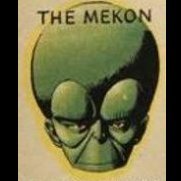
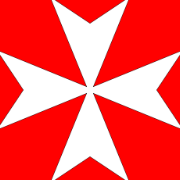
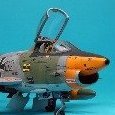
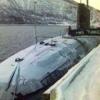
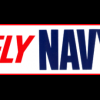
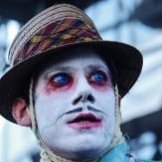

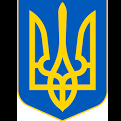
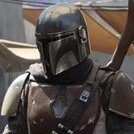
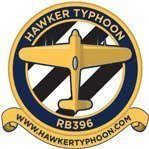


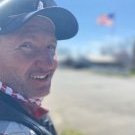
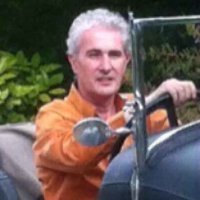
a.thumb.jpg.58d92d116b0315dc55d352fd191d65e4.jpg)


